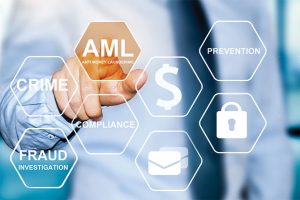By Rob Nichols, President and CEO, American Bankers Association
As I reflect on the last 12 months and the incredible changes that occurred virtually overnight to keep our society moving in the face of perilous uncertainty, I am filled with a deep sense of pride in how the banking industry stepped up to help make that happen.
As impossible as it is to believe, we have been living in a global pandemic for an entire year. What began as a headline from a distant corner of the world quickly became a worldwide health crisis that continues to wreak havoc on our way of life and has, unfortunately, claimed the lives of too many of our fellow citizens.
As I reflect on the last 12 months and the incredible changes that occurred virtually overnight to keep our society moving in the face of perilous uncertainty, I am filled with a deep sense of pride in how the banking industry stepped up to help make that happen. It speaks to the “can-do” spirit of America’s 2 million bank employees that as the world was shutting down, as daily routines were being upended, bankers embraced their role as economic first responders and got to work extending aid that helped keep individuals and businesses afloat.
With vaccines now being rolled out to certain groups, we are anxiously awaiting the day when we can finally return to some semblance of a normal life. But achieving herd immunity from the virus will take time, and as we prepare to mark one full year of quarantines, social distancing and face coverings, I’d like to offer a few observations.
Our financial system is resilient. After the last financial crisis, banks worked diligently to increase safety and soundness and manage risk more effectively. The post-2008 reforms were intended to help banks better absorb financial shocks — and the success of those reforms was borne out in the crisis response. It was widely acknowledged, by everyone from Financial Services Committee Chairwoman Maxine Waters (D-Calif.) to Federal Reserve Chairman Jerome Powell that banks performed well and were part of the solution to the coronavirus crisis.
Thanks to the strength of our financial system, there is reason to be hopeful for the economic recovery. In fact, the top economists at some of the nation’s largest banks who serve on ABA’s Economic Advisory Committee agree that we could see growth topping 4% in 2021. We must, of course, temper that expectation with the knowledge that the recovery will likely be uneven, and that labor markets could lag behind overall growth, given the massive job losses that occurred. That’s why, going forward, our advocacy for pro-growth policies will be more important than ever.
The digital revolution has been rapidly accelerated. Banks were already well on their way toward digital transformation before COVID-19. But the pandemic provided a push to bank customers who may not have fully embraced digital banking to do so in earnest. That will accelerate the digital transition even further, and will surely lead to efficiencies for banks down the road. The robust digital banking landscape also bodes well for financial inclusion — the ability to remotely access banking services will enable a broader set of customers to take advantage of the full panoply of financial tools and resources at their fingertips.
The relationships with our state associations are critical. From the earliest days of the pandemic, state associations played an instrumental role in analyzing and disseminating information that bankers needed to make PPP loans, facilitate economic impact payments and continue operating amid constantly changing health and safety guidelines.
With the help of our State Association Alliance partners, we delivered free resources to ABA members and nonmembers alike — including 33 free webinars, operational aids, crisis communications toolkits, scientific analyses and more — recognizing the importance of helping all banks weather the crisis.
Through weekly calls — and sometimes daily calls — there was a continuous flow of information and feedback between ABA in Washington and all 50 states. This collaboration was vital as policymakers worked to calibrate and re-calibrate rules and regulations implementing the first CARES Act. I have no doubt that this engagement will continue now that a second stimulus has been passed and a third package could soon follow.
These are just a few takeaways from this historic period. In the years ahead, I’m sure there will be even more robust lookbacks and more lessons that can be extrapolated from the coronavirus crisis. And the result all of that learning, I hope, will only serve to make us stronger, safer and even more prepared for the future.








